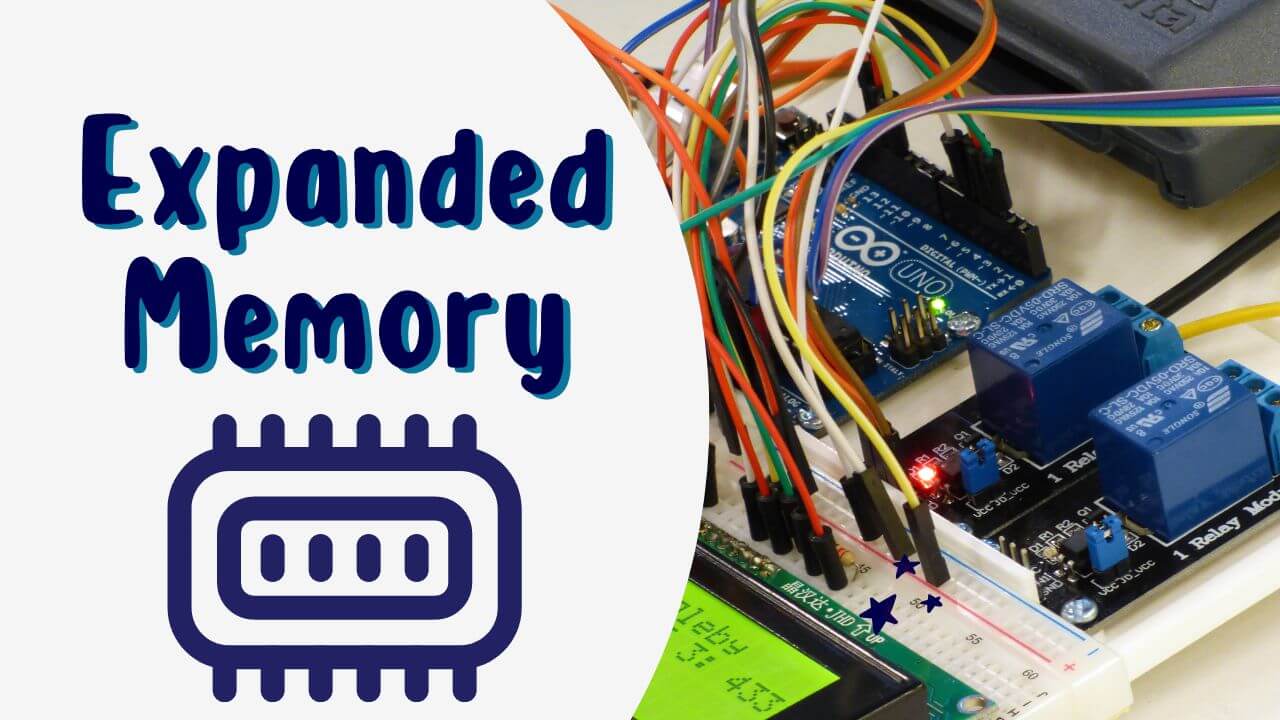Introduction
Welcome to our comprehensive guide on the Arduino Mega, a powerful and versatile microcontroller board that empowers you to take your DIY electronics projects to new heights. In this article, we will delve into the features, capabilities, and use cases of the Arduino Mega, providing you with all the information you need to harness its full potential and surpass your project goals.
Introducing Arduino Mega

The Arduino Mega is a microcontroller board part of the famous Arduino ecosystem. It is designed to provide enhanced performance and expanded capabilities compared to its sibling boards. Equipped with the ATmega2560 microcontroller, the Arduino Mega offers a significant increase in memory, input/output pins, and computational power.
Unleashing Power
Expanded Memory

One of the standout features of the Arduino Mega is its expanded memory capacity. With 256 KB of flash memory and 8 KB of SRAM, the Arduino Mega allows you to store and execute more complex programs and handle larger data sets. This makes it particularly suitable for projects requiring extensive code or significant data processing.
Abundance of Pins
The Arduino Mega boasts an impressive array of digital and analog input/output pins, offering 54 pins to connect a wide range of sensors, actuators, displays, and other electronic components. This abundance of pins allows you to design complex and multifaceted circuits without needing external multiplexers or complicated wiring setups.
Increased Computational Power
Powered by the ATmega2560 microcontroller running at 16 MHz, the Arduino Mega delivers substantial computational power. This enables you to efficiently tackle resource-intensive tasks, perform complex calculations, and execute time-critical operations. Whether you’re working on robotics, data logging, or simulation projects, the Arduino Mega has the processing muscle to handle demanding applications.
Unparalleled Versatility
Compatibility with Arduino Shields
One of the key advantages of the Arduino Mega is its compatibility with a vast selection of Arduino shields. Arduino shields are expansion boards that add specific functionality to your projects, such as WiFi connectivity, motor control, or additional sensor inputs. With the Arduino Mega’s extended pin count and compatibility with shields designed for the Arduino Uno, you have an extensive ecosystem of add-ons.
Multiple Serial Communication Channels
The Arduino Mega has four hardware UART (Universal Asynchronous Receiver-Transmitter) serial ports and a standard USB connection. This multiple serial communication capability allows you to interface with various external devices, such as GPS modules, Bluetooth modules, or other microcontrollers. It opens up opportunities for building complex communication networks and expanding the scope of your projects.
Rich Peripheral Support
With various built-in peripherals, including multiple timers, interrupt pins, analog-to-digital converters (ADCs), and pulse-width modulation (PWM) outputs; the Arduino Mega provides a comprehensive set of tools for interacting with the physical world. These features enable precise timing, accurate measurements, and control over analog devices, empowering you to create sophisticated and responsive projects.
Use Cases
The Arduino Mega’s enhanced capabilities make it an excellent choice for many DIY electronics projects. Here are a few areas where the Arduino Mega truly shines:
Robotics and Automation

With ample pins, computational power, and compatibility with motor control shields, the Arduino Mega is an ideal platform for building robots and automation systems. Whether you’re creating autonomous vehicles, robotic arms, or home automation solutions, the Arduino Mega’s power and flexibility give you the tools to bring your creations to life.
Data Acquisition and Logging
The expanded memory and numerous digital and analog pins of the Arduino Mega make it well-suited for data acquisition and logging projects. Whether you monitor environmental conditions, collect sensor data, or log information over an extended period, the Arduino Mega provides the necessary resources. You can easily interface with various sensors, such as temperature sensors, humidity sensors, accelerometers, or even GPS modules, to gather valuable data. With its robust memory capacity, you can store the collected data locally or transmit it to external storage devices or databases for further analysis.
Interactive Displays and User Interfaces
The Arduino Mega can drive interactive displays and create user interfaces for your projects thanks to its computational power and ample memory. You can connect TFT displays, OLED screens, or LCD modules to provide visual feedback, display sensor readings, or create intuitive user interfaces. You can build interactive control panels, data visualization tools, or even simple gaming devices with buttons, rotary encoders, or touchscreens.
Industrial Automation and Control Systems
The Arduino Mega’s extensive pin count and compatibility with industrial automation shields make it suitable for building automation and control systems. Whether you’re developing a small-scale industrial monitoring solution, controlling machinery, or managing a complex network of sensors and actuators, the Arduino Mega can handle the task. Its reliability, expandability, and support for industry-standard communication protocols, such as Modbus or CAN bus, make it an excellent choice for industrial applications.
Educational Projects and Prototyping
https://www.youtube.com/watch?v=lai4aGdc78A
The Arduino Mega’s versatility and accessibility make it an invaluable educational tool and rapid prototyping tool. Its compatibility with the Arduino development environment, vast online community, and abundant learning resources make it easy for students, hobbyists, and professionals to get started and quickly bring their ideas to life. The Arduino Mega provides a solid foundation for learning and innovation, from teaching programming and electronics concepts to building proof-of-concept prototypes.
Conclusion
In conclusion, the Arduino Mega is a powerful and versatile platform offering expanded capabilities and enhanced performance for your DIY electronics projects. With its increased memory, abundant pins, and impressive computational power, the Arduino Mega empowers you to take on more complex and ambitious ventures. The Arduino Mega excels in many applications, from robotics and automation to data acquisition and logging, interactive displays, industrial automation, and educational projects.
By leveraging the Arduino Mega’s capabilities, you can unlock new possibilities and bring your creative ideas to fruition. Its compatibility with Arduino shields, multiple serial communication channels, and rich peripheral support add further flexibility to your designs. Whether you’re a hobbyist, a student, or a professional, the Arduino Mega provides the tools you need to succeed.
So, why settle for ordinary when you can harness the power and performance of the Arduino Mega? Start exploring its vast potential today and embark on an exciting journey of innovation and discovery. Happy making!
Frequently Asked Questions
Q1: What are the critical differences between Arduino Mega and Arduino Uno?
Arduino Mega and Arduino Uno are popular microcontroller boards in the Arduino ecosystem but have distinct differences. While Arduino Uno is a compact board with limited pins and memory, Arduino Mega offers expanded capabilities. Arduino Mega has more memory, input/output pins, and increased computational power, making it suitable for complex programming projects, extensive connectivity, and advanced functionality.
Q2: Can I use Arduino Uno shields with Arduino Mega?
Yes, you can use Arduino Uno Shields with Arduino Mega. Arduino Mega is designed to be compatible with shields designed for Arduino Uno. This compatibility allows you to leverage the wide range of shields available in the Arduino ecosystem, expanding the functionality and possibilities of your projects without any additional modifications.
Q3: What are the advantages of using Arduino Mega over other Arduino boards?
Arduino Mega offers several advantages over other Arduino boards. Its expanded memory and abundant pins provide more room for complex code and extensive circuitry. The increased computational power enables handling resource-intensive tasks and time-critical operations. Additionally, the compatibility with Arduino shields and multiple serial communication channels enhances versatility and facilitates the integration of various modules and devices into your projects.
Q4: Can I use Arduino Mega for IoT projects?
Arduino Mega can be used for IoT (Internet of Things) projects. Its computational power, great pins, and compatibility with communication modules make it suitable for building IoT applications. You can connect sensors, actuators, and other IoT devices to the Arduino Mega, gather data, and communicate with external systems through various connectivity options like Ethernet, WiFi, or Bluetooth.
Q5: What is the power consumption of Arduino Mega?
Arduino Mega consumes slightly more power than other Arduino boards due to its increased computational capabilities and expanded functionality. However, it is still designed to be power-efficient and can be used in battery-powered or low-power projects with appropriate power management techniques. It is recommended to consider power requirements and choose appropriate power sources based on the specific needs of your project.
These frequently asked questions provide valuable insights into the key aspects and considerations regarding Arduino Mega. By understanding these details, you can make informed decisions and harness the power and versatility of Arduino Mega for your DIY electronics projects.
